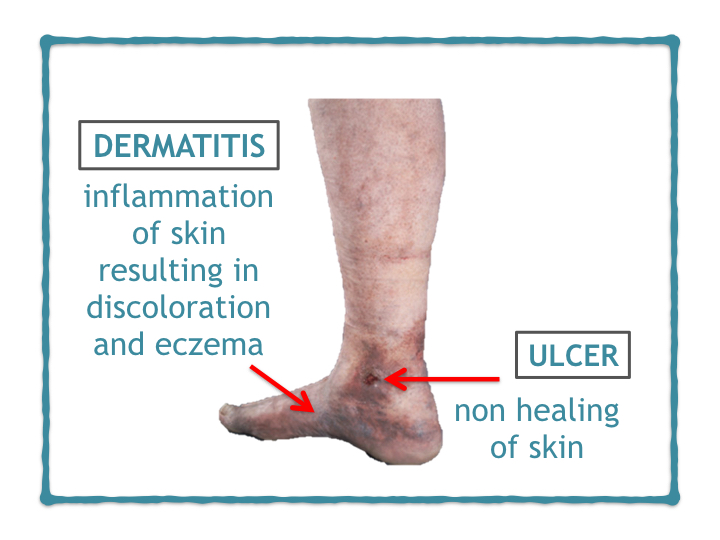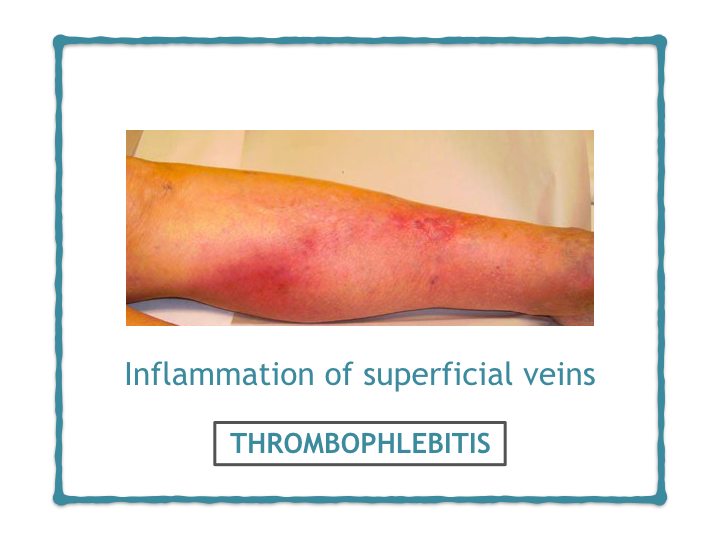Loading...
What are the complications of varicose veins?
In more severe cases, venous insufficiency and reflux can cause darkening of the skin (hyperpigmantation), especially in the lower third of the leg and around the ankle region.
There may be inflammation of the skin (dermatitis) resulting in further discoloration and eczema.
Inadequate nutrition may cause the skin to thin out and become papery, and ultimately scrape off. This results in wounds (ulcers) that may be very difficult to treat. An ulcer is a very painful, open wound where the skin layer has actually died and the underlying flesh is exposed. The non-healing ulcers may rarely turn cancerous (malignant ulcers).
The thinned out or ulcerated skin may expose the dilated engorged veins, which in turn may bleed profusely even with trivial injury (hemorrhage).
The inflamed veins can have its blood clot within (thrombophlebitis), causing redness, swelling and pain. This usually involves the superficial veins, though rarely the deep veins may also be affected.
The calf muscles my try to compensate for the dysfunctional valves by working overtime in order to help pump the blood mechanically by a squeezing action on the veins. Over time, this results in a giant swollen limb (hypertrophy).
The long-standing inflammation and malnutrition to the limb can cause necrosis of all the fat tissue below the skin (lipodermosclerosis), resulting in discoloration and hardening of the skin with eventual restriction of joint movements and limb deformity (talipes equinovarus).






